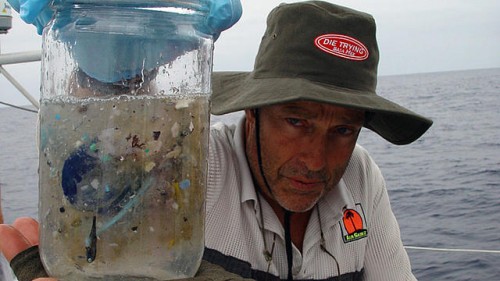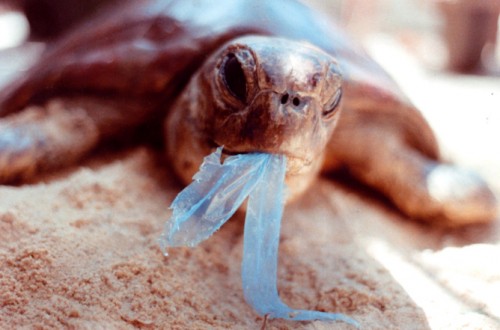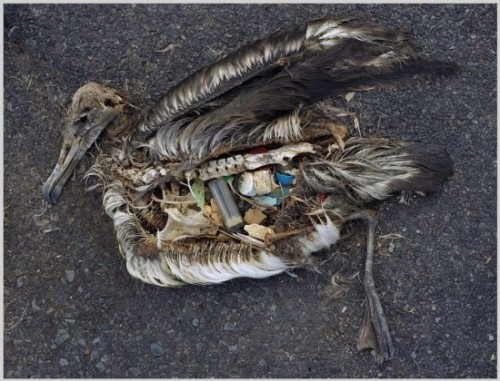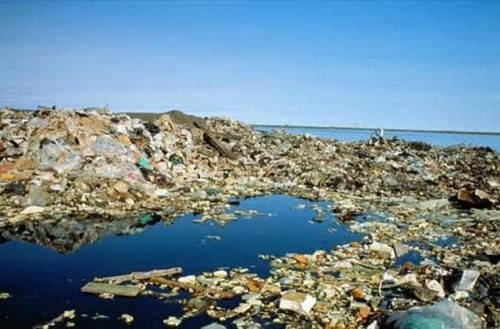
From above the Pacific Ocean, all is calm. Blue water meets blue skies, each reflecting the other’s pure, infinite depths. But now a white scrap meanders by; not the reflection of a cloud, but a bobbing Styrofoam cup. Soon it is joined by two, now three, now ten, now fifty others, all jostling for space. They start to stack, forming hills, mountains. They support their plastic brethren: discarded bottles, packaging materials, webbed fishing nets. Worn-out tires pile atop one another forming rubber towers, while flimsy shopping bags flutter like flags in the breeze. It is an island of plastic the size of Texas, floating in the middle of the Pacific.
This is the image that comes to mind when people hear of the Great Pacific Garbage Patch: a massive, floating heap of debris. However, while it is true that trash does find its way into the oceans, the Great Pacific Garbage Patch is not a floating island in the traditional sense. Instead, the Garbage Patch is composed of tiny plastic bits that linger unseen beneath the surface, ranging in size from a few square inches to barely visible specks.
Captain Charles Moore was the first to notice the Great Pacific Garbage Patch in 1997. Then a racing boat captain, he was sailing from Hawaii to southern California when he stumbled upon “plastic […] as far as the eye could see.” In an article he wrote for Natural History, he described “plastic debris floating everywhere: bottles, bottle caps, wrappers, fragments.” Seeking to quantify the extent of the debris, he towed fine-mesh nets behind his boat, collecting the plastic bits along with plankton in the water. He found that the mass ratio of plastic to plankton was an astonishing 6:1.

Moore explained that the garbage patch was formed by a system of ocean currents. In large ocean basins between continents, currents tend to move in a circular pattern, known as a gyre. These wind-driven currents push water towards the center of the basin. This means that any pollution that enters the Pacific will eventually be pushed to the center of the gyre, where it begins to accumulate. Of course, the Pacific gyre is not the only ocean gyre — all of the world’s oceans have circular currents like these. This means that there is not just one garbage patch, but many; the two next-largest ones are found in the Northern Atlantic and the Indian Ocean.
While Moore’s description of ocean gyres holds true, his initial description of the Great Pacific Garbage Patch has recently come into question. He claimed to “never [have] found a clear spot” in the ocean, perhaps leading to the hyperbolic tale of the floating island of garbage. In 2008, seeking to debunk the myth, Dr. Angelicque White of Oregon State University set off on a voyage through the heart of the Great Pacific Garbage Patch. White’s team towed nets behind their boat, just as Moore had, but their data told a different story. Yes, tons of plastic were floating in the Pacific, but the vast majority of these plastic bits were tiny, with 90 percent of them spanning less than 10 millimeters in diameter. The Great Pacific Garbage Patch, therefore, is less of an island and more a whirlpool filled with plastic confetti.

Despite the small size of the plastic bits, they can still have hugely negative impacts on the marine ecosystem. While larger plastics like six-pack rings can strangle marine animals, smaller plastics harm animals from the inside. The plastic waste is small and transparent, and it floats in the water column — just like plankton, which is a vital food source for fish and marine mammals alike. Animals cannot digest plastic, and if enough of it accumulates in their stomachs, they can die. Plastic can also contain toxins like DDT and PCBs. Once ingested, these chemicals do not break down, but build up in an organism’s body fat. As these organisms are consumed by larger and larger organisms, the levels of toxins increase dramatically, until those at the top of the food chain, including humans, are eating fish and fowl with dangerously high levels of toxins.
Although the myth of the Great Pacific Garbage Patch as a floating plastic island has been busted, the remaining facts are grim. Three ocean basins are rife with plastics, marine organisms consume plastic instead of plankton, and toxins climb up the food chain to humans. Is there a solution in sight? Scientists like Moore and White hope so. Researchers like them are currently working to understand the full scope of the garbage patches. Still, consumers should take note: it is only by drastically reducing plastic waste that the ocean gyres can hope to be cleaned for good. By choosing products wisely and recycling, consumers can take small steps to make the Great Pacific Garbage Patch into the Pacific that it should be: calm and quiet, where blue water meets blue skies.

